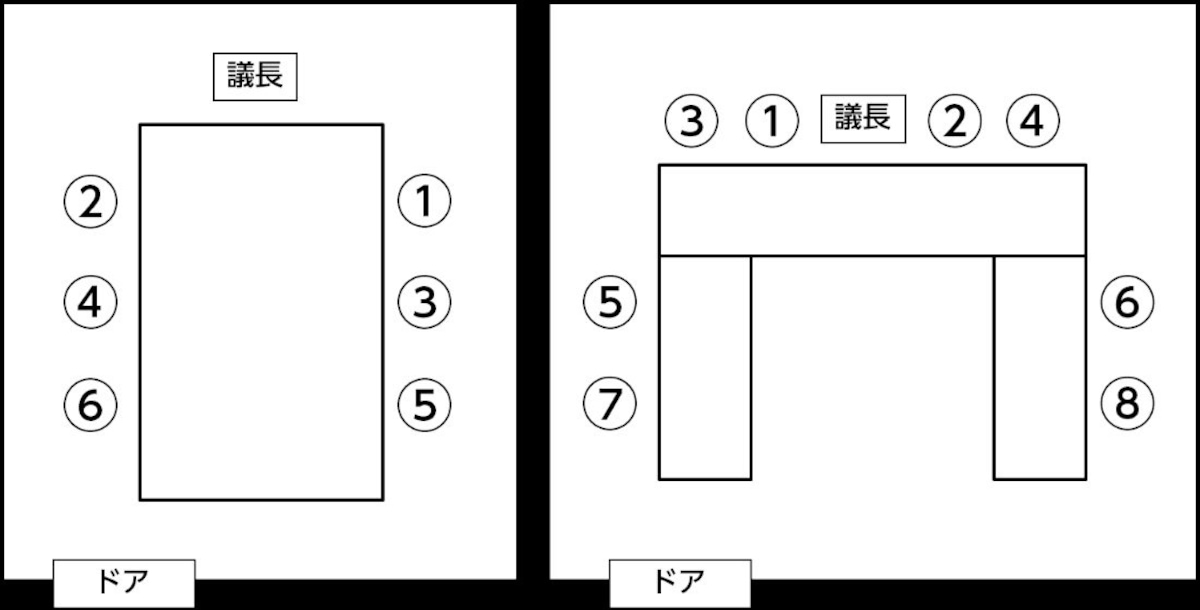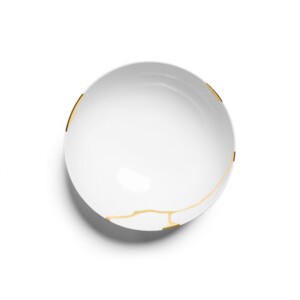If you are from Europe or America, most of the things you will experience when visiting Japan may come as a shock to you. What’s considered normal for Japanese people for us may be a deviation. And vice-versa. Doing business in Japan or with Japanese is no different. Some industries are more ‘relaxed’ and westernised than others. When we at Oishya started doing business with a very conservative and patriarchal Japanese blacksmiths, it was a true cultural clash for us. That’s why in today’s article we’ll try to help you encode often misunderstood aspects of doing business in Japan.
There has been much written about Japanese business etiquette, but sadly much of it seems written by people who have not been to Japan since many years. Most of the guides also do not take into consideration that Japan is a clash of traditions and modernity. Like we’ve mentioned before, some industries are more conservative than others, but rarely a Japanese business etiquette is a mystical art endowing even the most trivial business meeting in Japan with the level of etiquette expected of a tea ceremony in Kyoto.
Excluding those few very extreme cases of industries, Japanese business etiquette is not so different from a good business etiquette elsewhere: after all, evoking sense of trust, politeness, sensitivity to others, and good manners are the pillars of good business etiquette everywhere. The biggest difference with Japanese business etiquette, as with Japanese society, is that it tends to be more formal (especially at a first meeting). Only here you’ll see an exchange of business cards to be of almost ritualistic order.
The most obvious facets of Japanese business etiquette, affect personal behaviour during and around business meetings, but there are other less obvious things affecting how your company’s Japanese subsidiary must behave. Fortunately for foreign company executives doing business in Japan, Japanese will treat them more leniently. You won’t be hold to the same strict standards expected of their Japanese colleagues. Usually, Japanese business people will tolerate quite severe transgressions (within reason), while minor transgressions, which would doom a Japanese salesperson, might even help to break the corporate ice.
The key personal aspects of Japanese business etiquette to consider, are mostly related to first meetings, especially first meetings with senior Japanese executives. As time passes, the relationship with a Japanese customer strengthens and the formalities will decrease, especially after one or two dinners, lunches, or even offsite meetings at coffee shops. Regardless, we recommend never to assume you have reached the same level of business intimacy with a Japanese senior manager or executive, as you might have with executives in Europe, US or elsewhere.
Japanese usually do not begin to trust a person in business until having known them for at least 8-10 years. It’s common that you will not learn about your counter-party’s family life, or even if he/she has sons and daughters. If there is no full trust, there are some things that many Japanese businesspeople will just not talk about.
With that in mind, let’s look at some of the key aspects of Japanese business etiquette that affect foreigners doing business in Japan.
1. Greetings and Bowing
A courteous greeting is important. When you meet someone you have to bow and greet them. This is a very important etiquette in Japan and if you notice any local not bowing to another it will be considered very rude. However, for tourists, inclining your head or just an attempt at bowing will be highly appreciated by the Japanese. Also, addressing someone properly is also an important part of Japanese customs and you are expected to attach the suffix “san” to their last name, which shows respect for the person (like a title).

Source: Japan Society
The art of bowing is so important in this country that children learn it at an early age. There are many different ways to bow in Japan: standing, sitting, for young and elderly like also female and male variants. Of course, foreigners are not expected to bow, but the Japanese will be pleased if you return a bow. Here are some of them:
- The greeting bow (“eshaku”) of 15° is for people of equal business or social rank.
- The respectful bow (“keirei”) of 30° is a bow for a teacher or a boss.
- The deeply reverent bow (“saikeirei”) of 45° should be used if you apologise or see the emperor.
- The “begging for your life” bow is probably only used nowadays if you have done something really terrible.
Fun fact. In Nara Park, in Nara, Japan deers learned to bow when asking for food. If you ever go there, try it.


Some of the deers are are very playful….

And some are not in the mood …

2. Japanese Business Cards
Japanese business cards are a must-have. Japanese have double-sided business cards, with the Japanese face using the same design elements as the English face. If an executive’s original business cards are not English, such as for a German, French, or Italian, we recommend printing ones using double-sided English and ideally – with the Japanese translation on the other side.
Carry at least 100 Japanese business cards for a one-week business trip to Japan; expect to hand out 3 to 4 cards at a small meeting and as many as 10 to 12 at a larger meeting (decision making in Japan is never on the individual level, hence important meetings tend to be larger). If attending a trade-show, expect to hand out 100 or more Japanese business cards each day. If speaking at a conference, expect to hand out 50 or more cards in a day.
Some very important points to remember:
- Never flick, throw, slide, or push a business card across the table to a Japanese businessperson, because it implies you have no pride in the company you represent.
- Never fidget with, play with, bend, or fold a Japanese business card.
- Keep Japanese business cards in a proper carrying case and treat them with respect.
- While in Europe it’s ok to do that, never write notes on a Japanese business card. Enter any notes into a phone, tablet, or a small notepad.
- Always present a Japanese business card holding it with both hands, Japanese-language side facing forward (having your company’s logo at the top of the Japanese-language side will help align it correctly).
- Accept a Japanese businessperson’s business card with respect, using both hands, saying ‘Thank you’. Unless a foreign executive speaks Japanese fluently or wants to take the risk of a verbal slip, I recommend not to try using a Japanese greeting at a first meeting. Sometimes it can help to break the ice, but sometimes it can confuse the Japanese side.
- At most first meetings, the Japanese side will introduce their team in descending order of rank. I recommend waiting for the Japanese side to start the exchange as it avoids slighting the senior managers by first inadvertently exchanging cards with their juniors.
- Always carefully pick up all the Japanese business cards received at a meeting. Forgetting a Japanese businessperson’s card is a slap in his or her face because it implies he or she is unimportant. Consider that many of the junior employees at a Japanese company will be with it for life: one of the lower-ranked employees at a business meeting today might control a million pounds budget in 10 – 15 years time.
3. Business attire

There are different rules for women and men.
Women:
Sadly, little has changed for women in Japanese business over the last 50 years. Successive governments talk of encouraging women in the workforce, but industry’s interest often seems more focused on bringing mothers in their late 30s back to pressing photocopier buttons in humdrum office jobs, than in encouraging any real parity for women in the workplace. The idea of promoting women to senior management jobs, even in Japan’s tech companies where one might expect faster evolution, still has a long way to go. Many Japanese salarymen, senior managers and executives still don’t find it easy to relate to female executives, and it can present problems of pride for such executives from the Europe and US.
You should make your own decisions about how and to what extent you adjust your image to suit our company’s business needs and goals. Whether you like it or not (we don’t), the following are common recommendations for any female executive who wants to avoid being treated below her corporate level:
- Look strong but avoid looking too glamorous.
- Wear shorter or tied back hair.
- Avoid wearing too much perfume.
- Avoid bright handbags in meetings; it’s better to use an executive briefcase or shoulder-bag.
- Wear trouser suits or longer skirt suits with seasonal colours as described in the section above for men. Venture Japan does not impose a dress-code on female employees but I notice they always wear trouser suits for external business meetings.
- Consider that most Japanese companies do not allow female employees to wear jewellery or above the knee skirts.
- Despite Japanese companies often ‘requiring’ female employees to wear high-heeled shoes in the office, a foreign female executive should feel free to wear whatever business formal shoes she feels appropriate.
Men:
Japanese business etiquette has become less formal, but business attire has not changed much since I first wrote this section back in 2004.
- Although it may seem like every businessman in Japan is wearing black, do not wear a black suit, white shirt, and black or near-black tie because that is funeral attire.
- From October through April, most Japanese businessmen, especially senior managers, executives, and salarymen, wear dark navy, charcoal grey, or black suits, with a white shirt and subdued tie.
- Japanese businesspeople tend to wear formal coats in the winter months of December through February, and Burberry-style short raincoats in March and April.
- Japanese businessmen generally have well-groomed short hairstyles.
- From May through September, Japanese businessmen swap their dark suits for light grey suits.
- Japanese summers are hot and humid, so most Japanese men wear half-sleeve shirts during the summer months. Some Japanese salarymen (except salespeople) wear ties in summer. Some companies might insist their male employees wear ties to summer meetings, so to avoid embarrassment we recommend wearing a tie to such meetings and then asking if it’s acceptable to remove it if the Japanese side are more casual.
- Avoid wearing too much aftershave or cologne in a meeting.
- Consider that most Japanese companies do not allow male employees to wear beards nor to shave their heads.
4. Business meetings
In Japan, face to face business meetings are the life-blood of business relationships and the more successful meetings a foreign company executive attends, the more likely successful Japanese business will follow. Japanese society is often concerned with relative status in social relationships. Obviously, higher-ranking employees are considered higher status, but so are guests, those with more experience and those who are simply older. The above diagram shows the proper place for each one to sit, with the entrance at the bottom left and the leader of the meeting or gicho (議長) in the centre. As you can see there are different rules for different room layouts as well as for trains and taxis, but generally, the person with the highest status (No. 1) is next to the meeting leader.

Seating Arrangements By Rank (Photo credit: karakuchi-info.net)
However, before you hold the meeting, you need to prepare well. Here are some things to consider:
- Plan an exact agenda for the meeting. Japanese businesspeople tend to have tight schedules, so if the Japanese side says the meeting must finish at 4 pm they probably mean it.
- Never use an English-language presentation. You should always use presentations translated into Japanese or have a Japanese translator present with you.
- Use detailed slides, because from the Japanese side’s perspective, if a point is on a slide it’s important, if it’s not on a slide it’s probably not important.
- Take printed copies of presentations to the meeting to hand out to the Japanese side.
- If a foreign company needs a non-disclosure agreement signed, send it to the Japanese side well before the meeting. Many Japanese companies do business without written contracts and are wary of foreign company contracts because of horror-stories they hear about litigation. If a foreign company executive suddenly produces a non-disclosure agreement at a first meeting, the Japanese side will probably refuse to sign it without a legal review and very likely avoid meeting again.
- Always use a Japanese interpreter, not only for the reasons described in the section about Japanese business culture but because it shows consideration to the Japanese side and ensures they will understand the meeting.
- Always telephone 1 – 2 hours before a meeting to confirm attendance. If you have a Japanese agent, he will make sure to do that.
- Always call at least 45 minutes before a meeting if unavoidably late. Again, Japanese businesspeople tend to have tight schedules and might need to reschedule. Again, if you arrange things via your Japanese agent, he will make sure of keeping the agenda.
- Always arrive 10 minutes early for a meeting; 20 minutes if senior executives will attend.
- Don’t rush to the nearest available seat in the meeting room. There is a Japanese custom about which party sits on which physical side of the table (it depends where the door is and supposedly dates back to the samurai era).
- Take lots of notes, because it shows interest in the Japanese side’s views and creates an audit trail. Japanese companies train employees during induction to note down everything at meetings; if a foreign company executive ‘forgets’ a discount he or she promised in an early meeting, the chances are that even a year later, the Japanese side will have the notes they made at the time to prove it.
5. Personal habits
Japanese society is unusually formal, polite, and conformist; attributes which, especially formality, permeate the way Japanese businesspeople conduct themselves at business meetings and social gatherings. To avoid slip-ups, we recommend foreigners adopt the following simple precautions:
- If a Japanese businessman offers his hand then don’t use too much pressure during a handshake.
- It’s a big faux paux to blow your nose in public hence Japanese do not generally use handkerchiefs or tissues. If you need to do it, go to the bathroom. In part this habit arises because Japanese companies do not generally give paid sick-leave other than paid annual vacation, thus Japanese businesspeople are very sensitive about coming into contact with anyone who might be ill.
- As we’ve mentioned earlier, it takes years to earn trust from Japanese person. Hence, don’t try to make a small-talk about politics, religion, your family, your cars, your childrens’ academic achievements, or sports, because the Japanese side probably won’t be comfortable responding and be very unlikely to want to talk about their personal opinions or life.
- Don’t try to grab a Japanese businessperson by his or her hand to give it a hearty shake at first meeting. Many Japanese seldom shake hands and might be so uncomfortable doing so that they might avoid meeting again. It’s best to bow as Japanese do.
- Don’t try to high-five a Japanese businessperson unless you know him very well, especially not in front of his colleagues because it might embarrass him.
- Don’t pat a Japanese man on the back or shoulder; even his mother and father might never have done so.
- Japanese businesspeople have a very strong pride in their company and expect a foreign executive to similarly be proud of his or her employer, so never make derogatory remarks about co-workers.
- Don’t badmouth anyone, including competitors because a competitor might be the Japanese side’s next meeting.
- Always smile, act pleasantly, be willing to learn, ask a lot of questions about the Japanese side’s business vision and plans.
6. Extra tips on how not to insult a Japanese

There are few things you should be aware of even if you’re outside the business situation:
- Taking off your shoes at the entrance of homes (they give you a different pair of slippers to wear). We experienced this custom when entering offices being part of the fabric/workshop too. Don’t worry, the Japanese host will have slippers for you to use.
- Do not tip anyone ever! This is considered as an insult in Japan.
- Do not eat while you are walking around.
- Use both your hands if you are giving/receiving a gift.
- If you are using chopsticks to eat do not use leave them upright in your bowl, play with them or pass food to another person using them.
- Be punctual and do not raise your voice as it will be considered uncouth.
There you go. After following those ‘few’ tips you should leave a very good impression on your Japanese counter-parties. Good luck!
Cover photo: TripSavvy




















